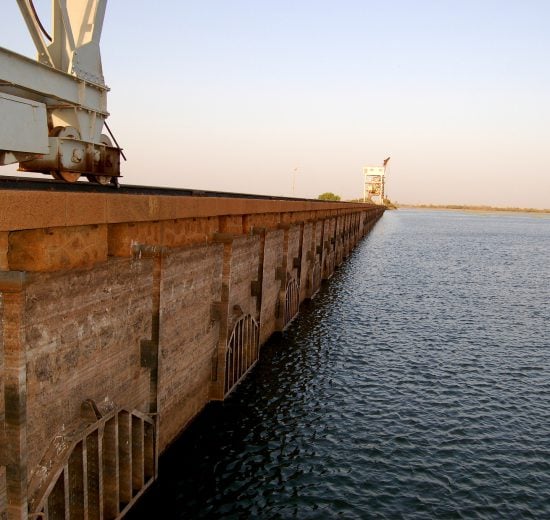
Dams
There are six dams across the Nile in the Sudan. These are:
- Sennar on the Blue Nile. Built in 1925 (capacity 0.07BCM);
- Jebel Awlia on the White Nile. Built in 1937 (capacity 3.0BCM);
- Khashm al-Girba on the Atbara. Built in 1964 (capacity 0.8BCM);
- Roseires Dam on the Blue Nile. Built in 1966 (heightened in 2014, capacity 7.0BCM);
- Merowe Dam on the Nile. Built in 2009 (capacity 12.0BCM);
- The Atbara/Setit Dam Complex (under construction).
Additionally, the controversial Dams Implementation Unit (DIU) has plans to build three more dams (Kajbar, Shreik and Dal).
These nine dams were identified in the 1950s within the Century Storage Project, which was subsequently abandoned (Map 1). In 2005, the Nile Basin Initiative recommended that no further dams be built in Sudan because of high rates of evaporation, which is seven times higher than in Ethiopia. The DIU ignored this recommendation, in spite of pressure from the scientific community and the dam-affected populations.

Irrigation systems
Only Sennar and Khashm al-Girba have irrigation canals on their downstream. The Gezira Scheme, for example, is irrigated by a 10,000km-long intensive canalization network. Other major agricultural projects include Suki, Rahad, Bourgeig, Kennana, Geneid, Asalaya, White Nile, Mikabrab, Keiheila and al-Multaga. They are all gravity irrigated with pumps. Operating the dams poses challenges, in part due to siltation and upstream land degradation, which often affects downstream water supply.
Sanitation and wastewater treatment network
There is only one proper functioning sewerage system in Sudan. It was built in 1959, in the old neighbourhoods of Khartoum (not in Omdurman or Khartoum North). The rest use open-air and pit latrines. Septic tanks and soak-away wells are used in wealthy residential areas. These can potentially contaminate sub-surface groundwater as well as deep aquifers.
There are two sewerage treatment plants. The only functioning plant treats a fraction of Khartoum’s old neighbourhoods. It was originally a trickling filter system. The effluents were subsequently diluted and used to irrigate the Green Belt, a 7,000-feddan eucalyptus plantation to the south of the city. About 30 years ago, evaporation ponds were introduced and the Green Belt was removed.
[1] Ministry of Electricity and Dams, Dams Implementation Unit, 2012. Available at www.oicvet.org/Presentations/Water_Management_Symposium/Sudan/Sudan.pdf, accessed [19/8/2017].


